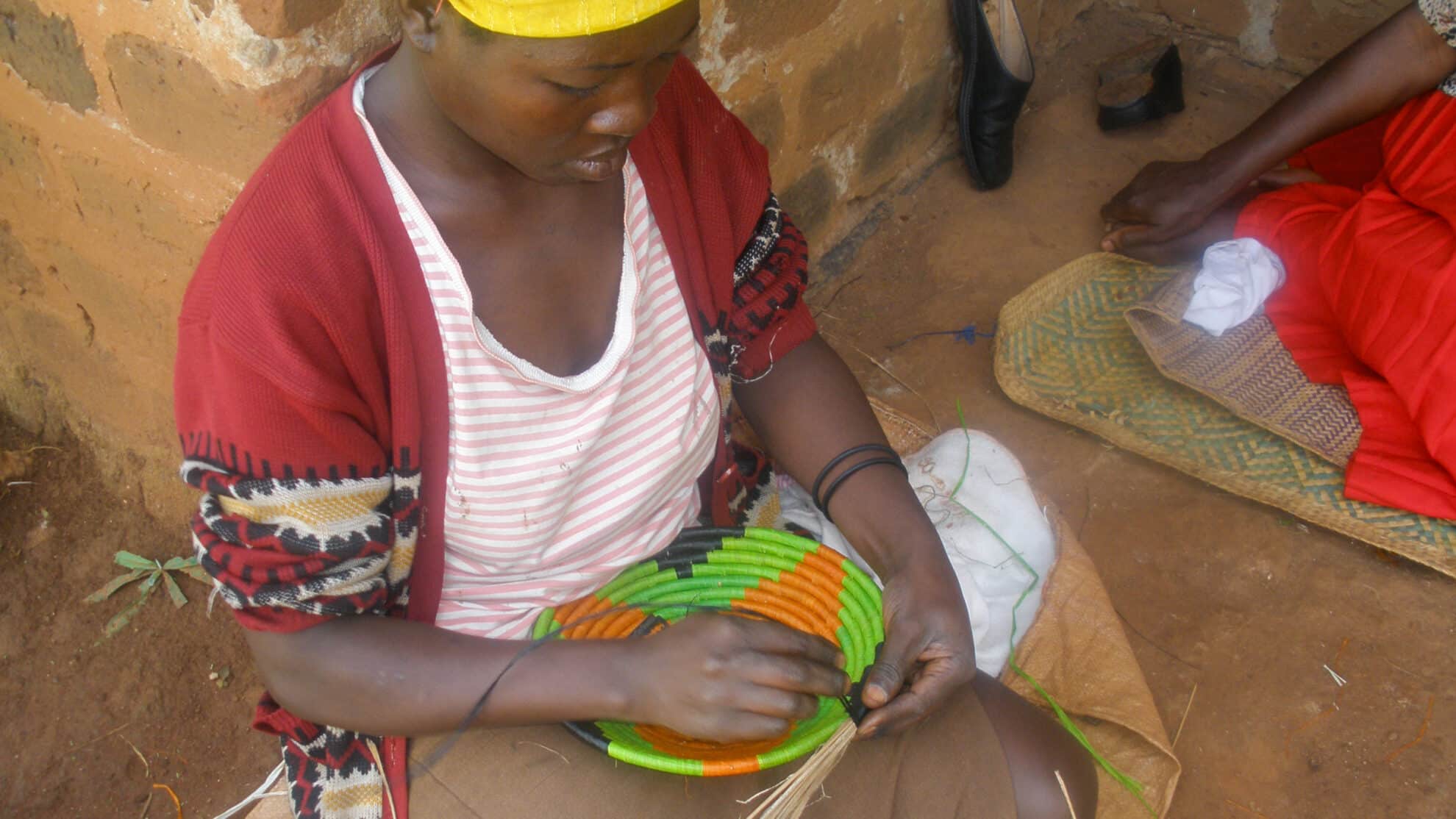African home-based workers are at the bottom of craft supply chains that see products sold both domestically and internationally. An increased understanding of those supply chains is crucial to overcome some of the challenges these craft makers are facing and to improve their livelihoods.
Who are these home-based craft makers?
Home-based craft makers in Africa are mostly people from the lower economic classes, often living in rural areas and informal urban settlements. The majority of these craft makers are women, though a significant number are men. They use local raw materials and skills that have been passed down through generations. Their wares are sold both domestically and overseas.
The exact numbers of home-based crafters are contested due to varying definitions and classifications of crafts in trade statistics and the exclusion of the home as a place of work. As goes for home-based work generally, it's often a dual task that is combined with other work, such as housework or agriculture. This makes it difficult to get clear figures on their economic contribution. A clear classification of crafts could help in accurately measuring their contribution to the economy, tourism, and exports.
Why understanding supply chains matters
It’s important for craft makers to understand supply chains because there are many misconceptions about the benefits and roles within these chains: who gets what at the end of the day. Knowing the stages of the supply chain—from sourcing raw materials, production, and distribution to the consumer—helps craft makers negotiate better prices and terms. It also helps them understand the challenges faced by each player in the chain, promoting cooperation and reducing misunderstandings and mistrust.
For example, in Ghana, the impact of climate change on the availability and transport of raw materials like reeds for basket weaving affects timelines and costs. Understanding this can help craft makers explain delays and negotiate more realistic deadlines and prices.
Challenges for craft makers
- The biggest challenges faced by craft makers are maintaining consistency and meeting the demands of large orders in the design and production process. Most craft-making skills are passed down through generations, without formal training.
- When a large store requests 5,000 pieces of a particular item, all of which need to look identical, these products might be made by many different individuals. Each worker will add their unique touch, leading to slight differences in size and form. Additionally, craft makers often lack proper tools, making it hard to produce uniform products.
- Craft making is a labor-intensive process. Many craft makers juggle their craft work with other responsibilities, such as housework. This means they might only be able to dedicate limited time to their craft, affecting their productivity. Inadequate infrastructure, such as scarce electricity and water, poor transport, and unreliable internet connections, further hampers productivity. Maintaining consistent quality across large orders is also a significant challenge.
- There’s often a gap between what the market wants and what craft makers produce, partly due to a lack of market research and trust issues between craft makers and intermediaries.
- Intermediaries, such as marketers and importers, play a crucial role in linking craft makers to markets, but craft makers often view them with suspicion. Craft makers may feel that intermediaries take too large a cut of the profits, but they rely on these intermediaries to access markets. This dependency can lead to power imbalances, with intermediaries deciding prices, terms of trade, and delivery timelines.
- There is a lack of knowledge about the roles and costs involved in each step of the supply chain: what their responsibilities are and how much it costs to do it. For intermediaries, there are costs for logistical services, rental costs and staffing. This determines the price of the product and the cut of the final price each player receives. If all the steps within the supply chain are understood, craft makers are able to negotiate from a point of information rather than accusation, which could help them to negotiate fairer prices.
- Craft work is a crucial income source for women but the most high-value craft work is often done by men, with women excluded for cultural or traditional reasons, or men taking over well-paid work.
Addressing the challenges
Shortening the supply chain ensures that craft makers receive a larger share of the final price, as it is distributed among fewer players. This can only work if craft makers organize into cooperatives and other forms of collectives at the local level and then uniting into national organizations like HomeNet Kenya, which enhances their negotiating power and access to markets. Cooperatives can also provide financial services, such as savings and credit, helping craft makers manage their earnings and invest in their businesses. HomeNet Africa is working together with country-based networks to encourage craft makers to organise around their common objectives.
In Kenya, homeworkers organized under the umbrella of HomeNet Kenya and set up their own savings and credit cooperative. This allows them to save, borrow, and reinvest their profits. That is how critical organizing can be.
Through their organizations, they also have access to more training on what the market needs, but also on how to manage their businesses.
The role of African governments
Governments in developing countries often prioritize foreign direct investment over supporting local industries. However, the craft sector requires relatively little investment to yield substantial benefits. By ensuring access to raw materials, improving skills and providing market access, governments can significantly enhance the livelihoods of craft makers. Organizing local exhibitions and integrating craft makers into tourism circuits can also increase their sales.
The earnings from craft making, particularly for women, directly support their families, making it a sector that deserves focused attention and support from governments.
Edwin Bett is HomeNet Kenya Technical Advisor, Regional Coordinator-HomeNet Africa and Executive Committee Member for HomeNet International.For more information on craft supply chains in Africa, please read this WIEGO Resource Document: Craft Supply Chains in Africa: Consolidating Our Findings.
